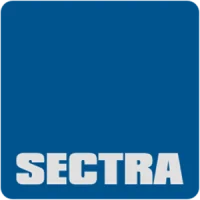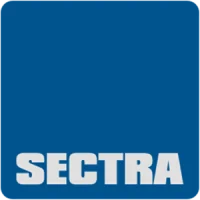Sectra polled 150 U.S. neurologists, neurosurgeons, urologists, orthopaedists, internists, and general surgeons to discover what they needed from radiology. Based on this information, we created this report outlining what radiology needs to focus on in order to improve its service to referring physicians – ultimately increasing overall efficiency in the healthcare chain and the quality of patient care.
The survey confirms the well-known fact that referring physicians would like to see an easy procedure for ordering studies, shorter report turnaround times and an efficient and secure method for notification of critical results. However, the survey also provides details as to what referring physicians actually express with their demands. It is interesting to note that 71% of the respondents in this survey refer patients to multiple facilities. Consequently, in a private healthcare market, the service level provided will influence a referring physician’s decision on where to send patients.
The report may also offer a few surprises. For example:
Are you providing 3D visualization with your reports? Six out of ten respondents think you should. Are the images you send to orthopaedists taken with a calibration marker? Seven out of ten respondents think they should be. You can also learn what factors referring clinicians consider to have the greatest impact on their collaboration with radiology.
Introduction
The majority of respondents in the survey are satisfied with the service they receive from radiology today (28% are very satisfied, 52% are satisfied). But how can radiology increase this level or maintain the current level in an increasingly strained healthcare environment?
The easier and faster radiology can provide accurate reports, the better the outcome for everyone. An efficient internal radiology workflow is important in providing superior service to all those who come in contact with radiology. But there are so many other factors at play.
Radiology can influence both the quality and effectiveness of care by providing referring physicians with the right tools and services. But what tools and services matter the most?
The survey identifies the areas that radiology should prioritize in order to raise the level of satisfaction, as well as the factors that referring physicians believe could jeopardize improved collaboration with radiology.
Shorter report turnaround times
Radiology’s key service is to provide timely and accurate reports. Six out of ten respondents rank this as very important or important. Many of the respondents also point out that improvement is needed. Related to this challenge is the fact that respondents bring up a need for improved communications accompanying the radiology results. Feedback includes:
• The need to convey urgency to radiologists in order to get them reading as soon as possible.
• The difficulty of reaching radiologists in real time.
• The challenges of speaking with radiologists directly.
• The situation concerning outsourced reading and the difficulties associated with contacting the reading radiologist when questions arise.
Hans Lugnegård, Product Manager for Sectra’s Diagnostic Imaging Suite, adds his thoughts:
“Achieving quick report turnaround times obviously requires an efficient RIS/PACS solution with closely integrated tools such as speech, intelligent display protocols, 3D visualization and other clinical applications.Another key for improving efficiency is data mining, which enables bottlenecks to be identified and the effect of implemented changes to be measured.”
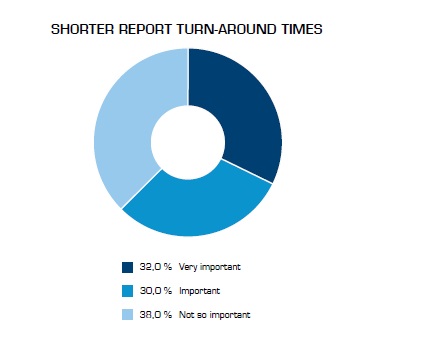
Ease of ordering studies and impact on times available for scheduling patients
Enhanced scheduling procedures are a recurring theme in the survey. 69% rank ease of ordering studies as very important or important, while 65% see impact on the times available for scheduling patients as very important or important. And, when asked which tools respondents have access to today, only 7% state they have access to web scheduling.
Ease of ordering studies is one of the most frequently raised issues when respondents are asked to describe their greatest challenge when working with radiology. They state such issues as:
• Inability to schedule studies for certain times.
• Getting the appropriate study ordered correctly and done quickly.
• Need for rapid scheduling of important studies.
• Difficulty getting patients set up for imaging exams in a timely fashion.
• Non user-friendly appointment scheduling processes.
• Inability to schedule with a particular radiologist rather than whoever is working that day.
• Communicating what they are looking for in the study and why they are ordering it.
“Ease-of-use tools for efficient scheduling of appointments enhance the digital workflow both within and outside the radiology department. It’s worth noting that so few have access to web scheduling. One way to facilitate appointment scheduling is to provide a referring physician with online access to the radiology calendar,” says
Petra Granlund, Product Marketing Manager for Sectra’s Referring Physicians’ Suite. “Furthermore, the clinical quality of radiology requests could also be enhanced by examination-specific request forms, ensuring that correct and relevant information is included in the request.”
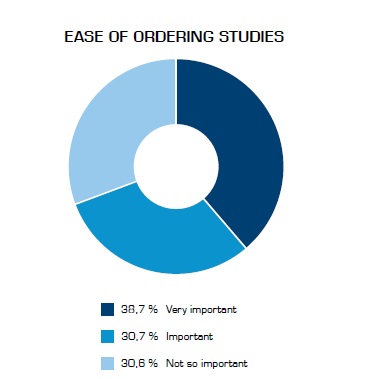
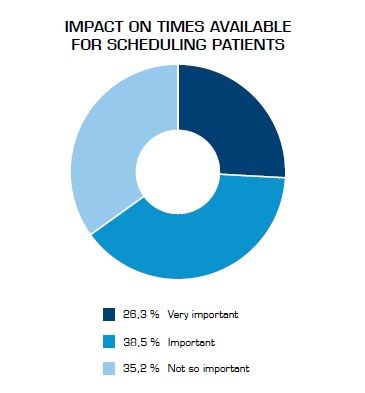
Effective notification of critical results
The survey shows clearly that the communication of critical results is also a main concern among referring physicians, with seven out of ten ranking this function as very important or important.
Mats Björnemo, Director of Product Marketing at Sectra, comments on these findings: “These results are not surprising. An insufficient workflow around critical results poses a direct threat to patient safety. The workflow should include the actual delivery of results as well as a notification to the physician wherever he/she may be. Verifying to the radiologist that the results have been received is paramount.”
Visualization tools for improved result communication
Another important area, according to respondents, is 3D visualization for improved results communication. Six out of ten respondents score this as important or very important.
Lisa Lindfors, Product Marketing Manager for Sectra’s advanced visualization solutions, comments on the results:
“New modalities such as multi-detector CT and MRI produce thousands of images per study, creating clinical opportunities but at the same time increasing demands on both radiologists and their referring clinicians.”
“It has become increasingly important for radiologists to present findings from large image stacks. Integrated 3D visualization tools support the radiologist when communicating with the referring clinicians by providing tools to explain and present important details and findings in a quick and easy way. This will improve the physician workflow across the enterprise.”
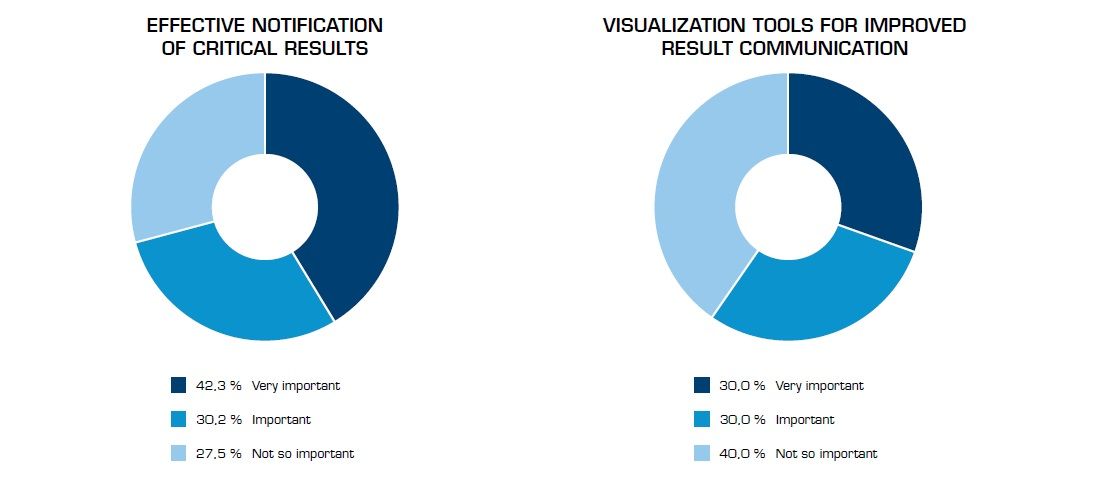
Orthopaedic surgeons demand high-quality images taken with calibration marker
Orthopaedists are among radiology’s most important customers. Increasing the service level for this group will increase satisfaction and strengthen the collaboration between these two departments.
When analyzing the responses from orthopaedic surgeons separately, we see that their responses are more or less in line with the overall results of the survey. However, the results show a slight tendency for orthopaedic surgeons to rate patient-related services as more important than the other respondents.
48% of the orthopaedic surgeons rate patient services, such as text message reminders and online access to appointment scheduling for patients, as important or very important, compared with 36% of the other respondents.
They also rate mobile devices for improved patient communication as somewhat more important. 26% of the orthopaedic surgeons rate this as very important, compared with 11% of the other respondents. There is also another aspect that differentiates the orthopaedic surgeons from the rest of the respondents. Orthopaedists not only read the radiology report, but also use the images to plan surgery. Hence, image quality is a key concern for this group of physicians.
Seven out of ten respondents feel it is important or very important that radiology can provide highquality images taken with a calibration marker. Images taken with calibration markers will increase accuracy and precision in pre-operative planning and surgery.
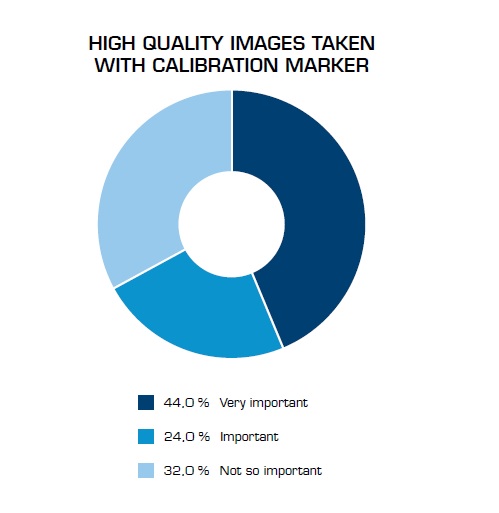
Magnus Svan, Global Sales Manager for Sectra’s orthopaedic operation, reflects on how important it is for radiology to give top-notch service to orthopaedic surgeons: “By providing a complete image solution, including radiology images taken with calibration markers, a digital templating tool integrated in the PACS system and a vast library of templates, radiologists can increase their service level to orthopaedic surgeons. This will also decrease the need to retake images, eliminate the need to burn CDs and reduce the need to supplement explanations and supporting measurements.All for the benefit of the patients.”
Other service areas
The study also gives insight into a few other areas:
• 19% rank “Increased support and training of radiology IT solutions” as a very important service, while 25% rank it as important.
• 21% rank “Integration with the radiology IT solution, providing full patient history” as a very important service, while 32% rank it as important.
• 16% rank “Use of mobile devices for improved patient communication” as a very important service, while 31% rank it as important.
• 6% rank “Patient services such as text message reminders and online access to appointment scheduling” as a very important service, while 33% rank it as important.
“It’s surprising that so few respondents have ranked patient services as very important. Our experience shows that simple services such as text message reminders are not only welcomed by patients, they also have a substantial impact on reducing ‘no-shows,’ allowing hospitals and clinics to achieve better resource utilization for both staff and modalities, which in turn improves the throughput of patients,” says Petra Granlund, Product Marketing Manager for Sectra’s Patient Services Suite.
Challenges to improved collaboration between radiology and referring physicians
Respondents select two areas as having the greatest impact on the collaboration between radiology and the specialties they serve: network connectivity/remote access (54%) and integration with the hospital PACS/EMR (51%).
Network Connectivity/Remote Access addresses the ability to have access to radiology data from any location, on any mobile device. Result distribution through mobile access to images, requests and reports directly on a tablet computer, such as an iPad, is one way for radiology to address this challenge. Offering full flexibility as to where and when to view patient information, as well as providing tools that help physicians make swift and accurate decisions when not at their workstations, will shorten lead times and enhance the quality of care.
Integration with the hospital’s PACS/EMR reflects the referring physician’s need to focus on total patient care, whereby radiology is just one piece of the equation. Easy access to lab data, post-operative reports and pathology information provides critical components of the total patient record.
“As the respondents point out, technology offers great potential for making the collaboration between radiology and referring clinicians smoother. But as the previous sections in this report show, technology is not the only issue. It’s especially interesting to see the referring physicians’ concerns about getting in touch with radiologists for follow-up questions when reading is outsourced. Given the trends we see towards an increased outsourcing of radiology, this is a question that needs to be addressed,” says Hans Lugnegård, Product Manager for Sectra’s Diagnostic Imaging Suite.





